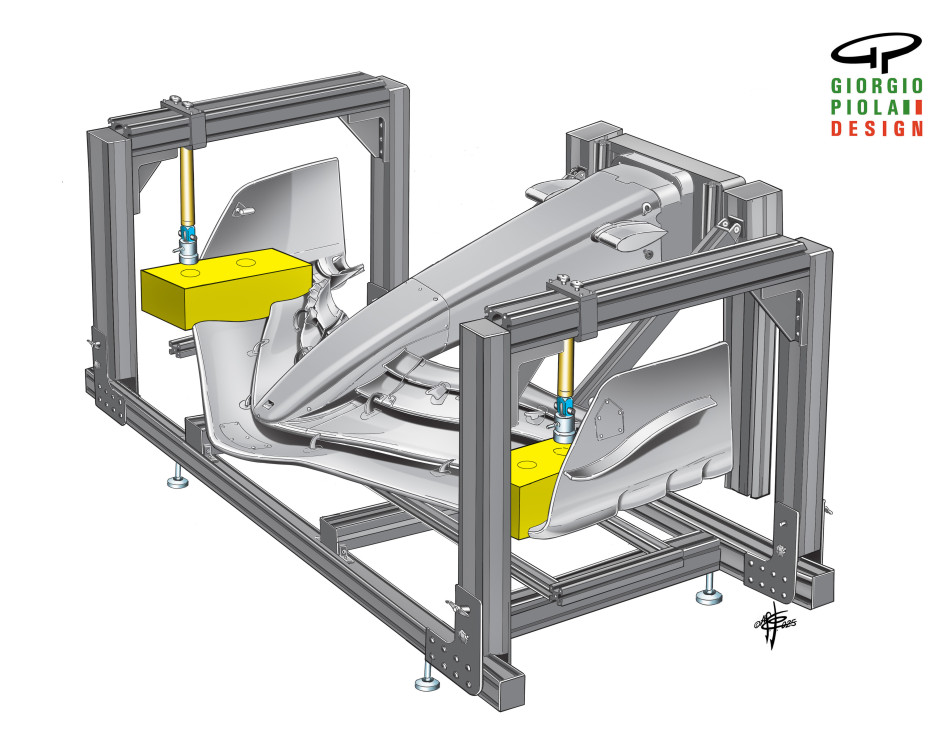
The 2025 Spanish Grand Prix isn’t just another race, it’s a flashpoint in this year’s tightly contested Formula 1 season. While all eyes are on Barcelona’s historic Circuit de Catalunya, the bigger story this weekend is happening under the cars and behind the scenes: the FIA’s tightening grip on aerodynamics and safety.
FIA’s Flexi-Wing Rule Clampdown: The Technical Directive That Could Reshape the Grid
As of this race, the FIA is enforcing updated Technical Directive TD018, aimed at cracking down on the growing sophistication of flexible front wing designs. These so-called “mini-DRS” setups have allowed teams to bend the front wing surfaces under high-speed loads, reducing drag and improving straight-line speed without compromising cornering grip.
The new rule reduces the allowed deflection across multiple tests:
- Symmetrical load: 100kg load, deflection limit cut from 15mm to 10mm.
- Asymmetrical load: deflection reduced from 20mm to 15mm.
- Flap edge test: 6kg point load, with allowable flex dropping from 5mm to 3mm.
While some fans see this as a mid-season curveball, it’s actually part of the FIA’s longer-term battle to keep aerodynamic trickery within controllable bounds. As FIA’s Nikolas Tombazis bluntly put it: as title fights heat up, teams naturally start scrutinizing each other’s cars, and that scrutiny led to this technical tightening.
Ferrari: Quietly Confident and Fully Prepared
Ferrari may have been among the best prepared for this rule change. Rather than protesting, they quietly brought a redesigned front wing to Spain, adjusting carbon fiber layups and reinforcement points to comply with the new load tests.
Fred Vasseur has labeled the change a potential “game-changer” not necessarily because Ferrari was heavily using flexing themselves, but because their conservative approach may give them a relative advantage if rival teams need to dial back their more aggressive aero setups.
In some corners of the paddock, Ferrari are widely tipped as the team most likely to gain from this crackdown. Their Barcelona upgrade is intentionally minimal, signaling confidence that their current package remains competitive even under stricter testing.
McLaren: Under Control, But Still Watching
McLaren have also proactively adapted, introducing a stiffer front wing solution that was already tested at Imola. They’ve added extra horseshoe supports and stiffened adjuster connections to limit flex without compromising balance too heavily. Lando Norris even suggested the change felt almost negligible behind the wheel.
Oscar Piastri downplayed the overall importance of the rule change, calling it “overhyped” and reinforcing that McLaren’s recent surge isn’t tied to flexible aero tricks. Still, they made the necessary modifications to avoid any FIA scrutiny this weekend.
Despite their public confidence, the fact that McLaren invested engineering resources into new front wing components suggests they were taking no chances.
Mercedes: Cautious Yet Hopeful for Shakeup
Mercedes boss Toto Wolff has openly suggested that Ferrari may be the biggest beneficiary of the new directive, hinting that his own team, as well as some unnamed rivals, may have been using front wing flexibility to varying degrees. George Russell echoed that while the rule itself won’t make anyone faster, it may “bring some teams backwards” more than others.
This understated Mercedes stance reflects a quiet hope within the garage that the rule enforcement might narrow the gap to McLaren and keep Red Bull at bay, even if it doesn’t directly elevate the W15’s outright performance.
The FIA’s Other Experiment: Skid Block Safety Trial
Barcelona won’t just feature new front wing tests. The FIA is also trialing an entirely new steel skid block design during Friday practice sessions.
The motivation here is fire prevention. After sparks from titanium skid plates ignited multiple grass fires in Japan earlier this season, the FIA is testing steel inserts that produce cooler, less volatile sparks. However, steel brings its own tradeoffs: it’s approximately 750 grams heavier than titanium and wears out significantly faster, both factors that could force teams to raise ride heights, impacting downforce and tire wear.
This test will give the FIA data to evaluate whether steel skid blocks may be mandated in future races, particularly at circuits where grassy runoff areas pose heightened fire risk.
Editorial & Paddock Sentiment: Who Stands to Gain or Lose?
The general feeling inside the paddock, is that:
- Ferrari likely stand to benefit, as they’ve designed more conservatively throughout 2025.
- McLaren may see little disruption, having already validated their updated components at prior races.
- Red Bull remains a wildcard, flexi-wing complaints have not been loud for this team.
- Mercedes quietly hope others are forced to scale back more than they will.
- Midfield teams like Sauber and Aston Martin hope any shakeup could compress the field and offer opportunities to punch above their weight.
Auto Motor und Sport summarized the mood best: while no one expects this rule change to completely reorder the grid overnight, Barcelona may serve as the first real indicator of who was pushing the envelope and who built their car with margin to spare.
The True Test Begins in Barcelona
The 2025 Spanish Grand Prix now serves as far more than just another round on the calendar, it’s the starting point for the FIA’s latest round of technical oversight. How quickly teams adapt (or suffer) under the stricter flexi-wing rules, and whether the skid block trial progresses into full-season regulation, could influence both the 2025 championship outcome and development philosophies heading into 2026.
The lights go out on Sunday at 2 PM local time. But the real story may have already started long before the race.
